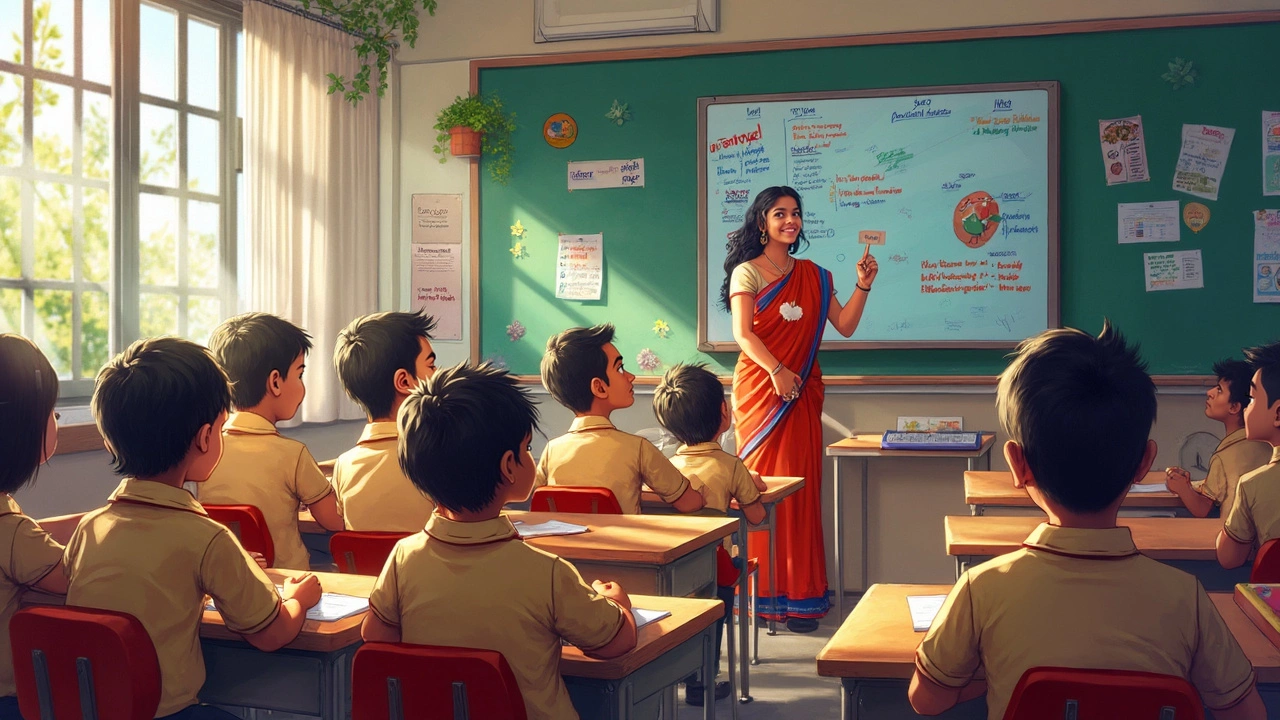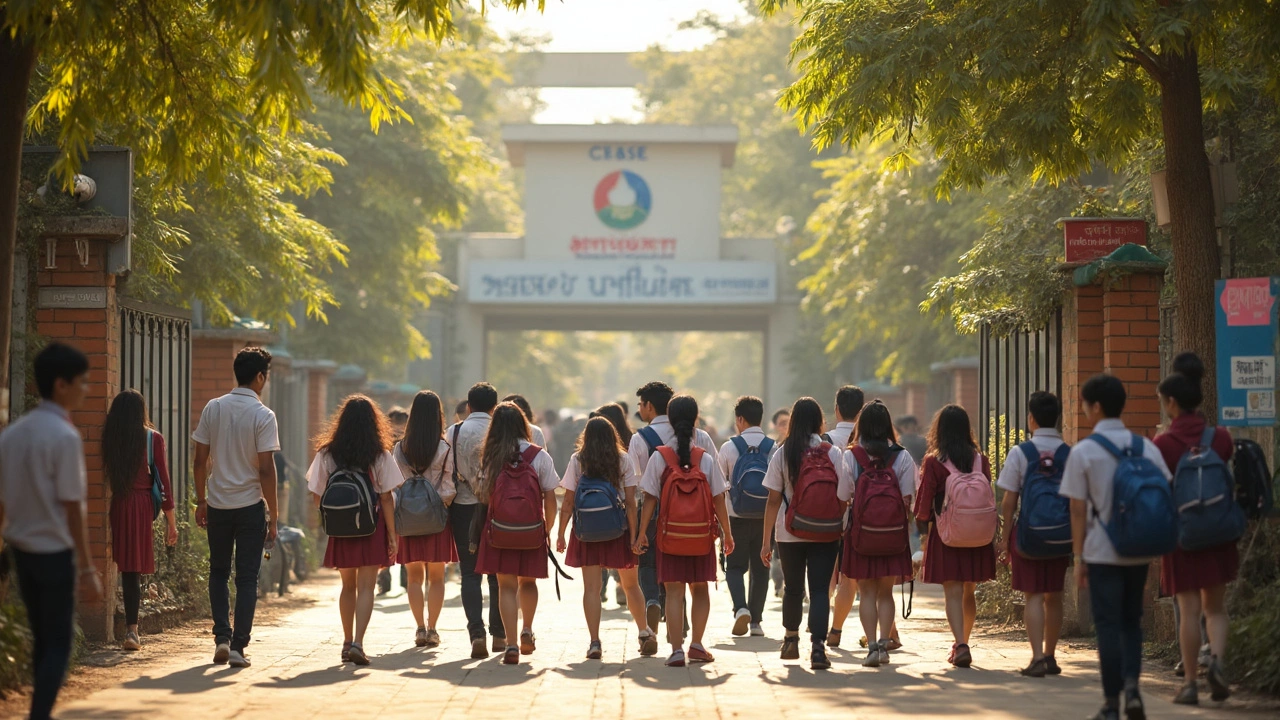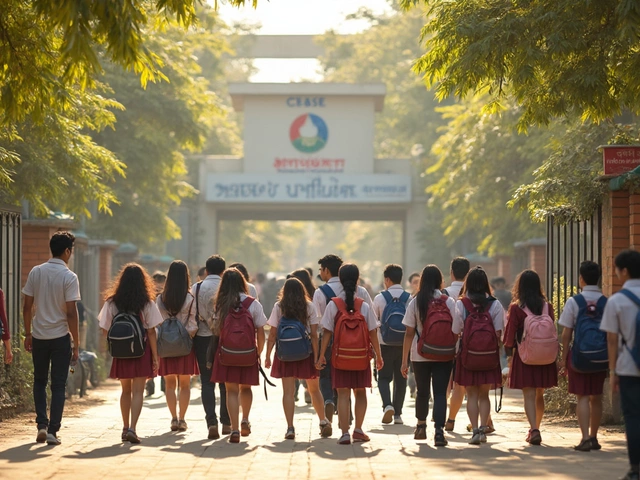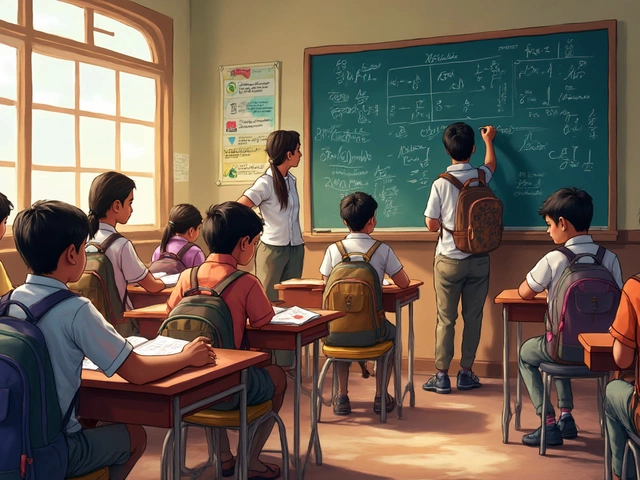If you’ve ever scrolled through school admission forms in India, CBSE pops up everywhere. It's not just a random term—CBSE means Central Board of Secondary Education, and it's the stamp you’ll see on most well-known private and public schools across the country.
So, what’s the deal with these schools? CBSE schools follow one syllabus across India. That means a kid in Mumbai and another in Chennai are studying the same math, reading the same stories, and prepping for the same board exams. Makes things way smoother if your job means changing cities. That’s exactly why a lot of my friends who work in IT or government roles swear by CBSE for their kids.
But CBSE is more than just convenience. These schools are known for a balance—solid science and math foundation, English as the main medium, plus they throw in sports, arts, and even coding these days. If you want your kid ready for entrance exams like JEE or NEET, or to move abroad for college later, CBSE makes a strong case.
- What Exactly Are CBSE Schools?
- How the CBSE Syllabus is Structured
- Why Parents Prefer CBSE Schools
- Tips for Picking a Good CBSE School
What Exactly Are CBSE Schools?
CBSE schools are those that follow the guidelines, exams, and syllabus set by the Central Board of Secondary Education. This board is run by the Government of India, making it one of the most trusted education boards in the country. You’ll find these schools in big cities, small towns, and even outside India in places like UAE and Singapore.
The best part? All CBSE schools teach the same stuff—so a transfer from Bengaluru to Pune won’t mess up your kid’s learning. Parents dealing with job relocations love this consistency. Even exam dates and marking schemes are the same everywhere, so there are no surprises right before the board exams.
Here’s a quick look at the numbers that show just how massive CBSE really is:
| Fact | Number |
|---|---|
| CBSE affiliated schools (2024) | 29,500+ |
| Indian states with CBSE schools | All 28 + 8 UTs |
| Countries with overseas CBSE schools | 26 |
| Students taking Class 10/12 exams annually | Approx. 3.5 million |
Most CBSE schools use English for teaching, though some may offer Hindi or a regional language as well. The highlight is their focus on Science and Maths, but they still offer plenty of languages and options like Physical Education, Computer Science, and even creative arts. The CBSE Board controls big exams like Class 10 (AISSE) and Class 12 (AISSCE), which matter for college admissions and competitive exams.
CBSE schools can be public (like Kendriya Vidyalayas or Jawahar Navodaya Vidyalayas) or private chains—basically, you get everything from old-school setups to fancy, air-conditioned campuses with robotics labs.
How the CBSE Syllabus is Structured
The CBSE syllabus sticks to a simple rule: cover the essentials, make it future-ready, and keep things standardized no matter where your child goes to school. Kids start with the basics in lower classes and pick up more advanced stuff in higher grades.
The structure runs from Nursery all the way to Grade 12. Here’s how it usually looks:
- Primary (Classes 1-5): This stage is all about reading, writing, basic math, and environmental studies. Learning by doing is a big deal here—they use projects, activities, and real-life examples.
- Middle (Classes 6-8): Subjects get a bit more focused. Think science, social studies, a second language, mathematics, and English. The skills taught here set up kids for the tougher stuff ahead.
- Secondary (Classes 9-10): Now it’s serious business—board exams at the end of Class 10. Students study five core subjects: English, one more language, math, science, and social science. The pattern is exam-focused but still includes projects and assignments.
- Senior Secondary (Classes 11-12): Here, students pick a stream—Science, Commerce, or Humanities. The subjects depend on the stream, ranging from Physics and Business Studies to Sociology and Fine Arts. Exams are key at this stage since results can decide college admissions.
CBSE updates its books and syllabi almost every year. They switch up chapters, add new topics like coding, and tweak the question patterns. The goal? Cut out rote learning and push for understanding. If your kid is good at analysis, solving problems, or applying concepts in real life, they’ll fit right in.
For curious parents, here’s a quick table to break down subjects offered at key stages:
| Stage | Main Subjects | Assessment |
|---|---|---|
| Primary (1-5) | English, Math, EVS, Hindi/regional, Arts | Tests, projects, activities |
| Middle (6-8) | Math, Science, Social, Languages, Comp. Science | Regular tests, projects |
| Secondary (9-10) | Math, Science, Social Science, English, 2nd Language | Board Exams, projects |
| Senior Secondary (11-12) | Stream-Based Subjects | Board Exams, practicals |
CBSE also brings in skill-based electives like Artificial Intelligence, Yoga, and Financial Markets, so your kid can pick up real-world skills along with classroom learning. So if flexibility is a huge deal for your family, this is a big plus.

Why Parents Prefer CBSE Schools
If you ask around at any parent-teacher meeting or family gathering, you’ll probably hear the same reasons crop up. CBSE schools just seem to check a lot of boxes that matter to Indian families, especially if you move cities for work or want your child prepped for tough entrance tests.
The first thing people point out is the CBSE curriculum’s consistency. You get the same lessons whether you’re in Delhi or Kochi. For parents who are transferred often—think about folks in the Army, PSU jobs, or corporate roles—this is a lifesaver. No kid wants to juggle different books and topics every time their parent lands a new posting.
Entrance exam readiness is the next big draw. The board’s syllabus is closely aligned with major competitive exams such as the JEE (engineering) and NEET (medical). If your child dreams of an IIT or a top medical college, they have a head start because much of the exam content is already covered in their school books.
"CBSE students have an edge in national-level entrance tests as the core subjects are more focused and updated regularly," says K. Srinivasan, former principal of Kendriya Vidyalaya, Hyderabad.
CBSE schools also tend to have a strong focus on co-curriculars. From coding competitions to sports and environmental clubs—there’s a good push for all-round development. It’s not just about marks but being confident in other areas too. Plus, with English as the main medium, kids usually get a good grip on the language, which helps in almost every career path these days.
One underrated point: the number of options. There are over 28,000 CBSE-affiliated schools in India, according to the CBSE official website in 2024. That’s not a typo. It actually means families have choices in nearly every city and even abroad where Indian expat communities live.
| Reason | Why It Matters |
|---|---|
| Uniform Syllabus Across India | Easy transfers, less academic disruption |
| Focus on Science and Competitive Exams | Better prep for JEE, NEET, Olympiads |
| Wide Network | Choice of schools in every city |
| Co-curricular Activities | Balanced growth, exposure beyond books |
| English Medium | Stronger communication skills |
So, if you’re trying to figure out a safe educational bet that adapts as your life changes, it’s clear why CBSE schools land at the top of most family lists.
Tips for Picking a Good CBSE School
Choosing the right school can seriously affect your kid’s learning and happiness, so don’t rush it. When you’re checking out CBSE schools, here’s what you need to focus on.
- Check the school’s CBSE affiliation number: Every legit CBSE school has a unique affiliation number. You can find it on the school website or look it up directly on the official CBSE site. This avoids nasty surprises later.
- Look at board results over the last few years: No need to settle for just hearsay. Good schools usually display their board results proudly. High scores matter, but also check for consistent performance.
- Don’t ignore infrastructure and safety: Make a visit. Are classrooms clean? Kids have safe playgrounds? Labs are actually used, not just photo props? CCTV, secure entry/exit—these things matter way more than fancy uniforms.
- Focus on teacher quality: Ask about qualifications, years of experience, and if the school organizes regular teacher training. A fancy building is useless with lousy teachers.
- See the balance between academics and activities: CBSE pushes sports, arts, and coding. Look for proof—annual fests, student clubs, interschool competitions, or robotics labs.
- Ask parents and kids directly: Nothing beats honest reviews. Visit at pickup time and strike up a chat with waiting parents. Or look for school WhatsApp groups or local forums online for real talk and not just shiny brochures.
Also, think about commute time to the school—nobody wants to see their kid lose hours in traffic. CBSE itself doesn’t allow extra classes or tuitions during school hours, so make sure the regular teaching is actually good enough.
If your family moves often, check if the school chain has branches in multiple cities. This makes transfers much easier—admission policies and syllabuses will match, so your child won’t be left behind or forced to repeat lessons.
Last tip: don’t get blinded by high fees. Some of the best CBSE schools are not always the most expensive ones. Focus on quality and transparency instead of just glitzy campus tours.



